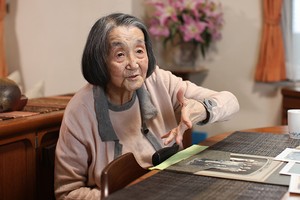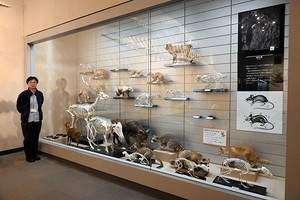THE ASAHI SHIMBUN
March 21, 2025 at 16:38 JST
 The female police uniform in the center has been used since 1994. The one on the right was adopted in 1967 while the one on the left was introduced in 1976. (Provided by Metropolitan Police Department)
The female police uniform in the center has been used since 1994. The one on the right was adopted in 1967 while the one on the left was introduced in 1976. (Provided by Metropolitan Police Department)
The National Police Agency said March 21 it will eliminate skirts from police uniform options starting in April and offer cooler clothing choices to help officers better cope with the summer heat.
Female police officers rarely choose skirts for work, opting instead for pants that are easier to move around in, particularly at crime scenes.
The NPA’s uniform regulations currently stipulate that female officers wear either skirts or pants for work. It will revise the regulations and mention only pants.
However, the NPA said skirt uniforms will remain an option for formal attire at ceremonies and other occasions.
In reality, more than half of the prefectural police departments across Japan have already made such changes.
Tokyo’s Metropolitan Police Department, for example, stopped issuing skirts in 2000 and only lent them to officers on request. It then stopped lending them in 2019.
The NPA also decided for the first time to adopt polo shirts for summer uniforms due to the extreme heat in recent years.
Police departments across the country have been calling for the option of wearing polo shirts that are highly breathable and quick drying.
Each police department will decide when to offer the shirts to their officers.
Around 100 police officers from four stations in Saitama Prefecture, which has notorious summer hotspots, such as Kumagaya, will begin a trial of wearing polo-shirt uniforms from May.
“It absorbs sweat better and feels cooler than a regular shirt,” Inspector Tomonori Takahashi of the Saitama prefectural police’s equipment division said of the polo shirt.
“We have to work under the scorching weather or in closed spaces without air conditioning. So, I feel that it puts less strain on the body,” he added.
In other countermeasures against the summer heat, the NPA will introduce mesh-topped caps for uniforms and allow officers to remove the headwear at “koban” police boxes or residential police boxes.
They will also not be obliged to wear ties with their uniforms.
In recent years, police departments have implemented their own measures to deal with extreme heat.
The Kyoto and Ehime prefectural police switched to more breathable helmets for traffic control duty.
Aomori prefectural police started to wear neck coolers, while Gifu prefectural police introduced a summertime system that starts work earlier at its police academy.
(This article was written by Daichi Itakura and Masahide Miyajima.)




















A peek through the music industry’s curtain at the producers who harnessed social media to help their idols go global.
A series based on diplomatic documents declassified by Japan’s Foreign Ministry
Here is a collection of first-hand accounts by “hibakusha” atomic bomb survivors.
Cooking experts, chefs and others involved in the field of food introduce their special recipes intertwined with their paths in life.
A series about Japanese-Americans and their memories of World War II